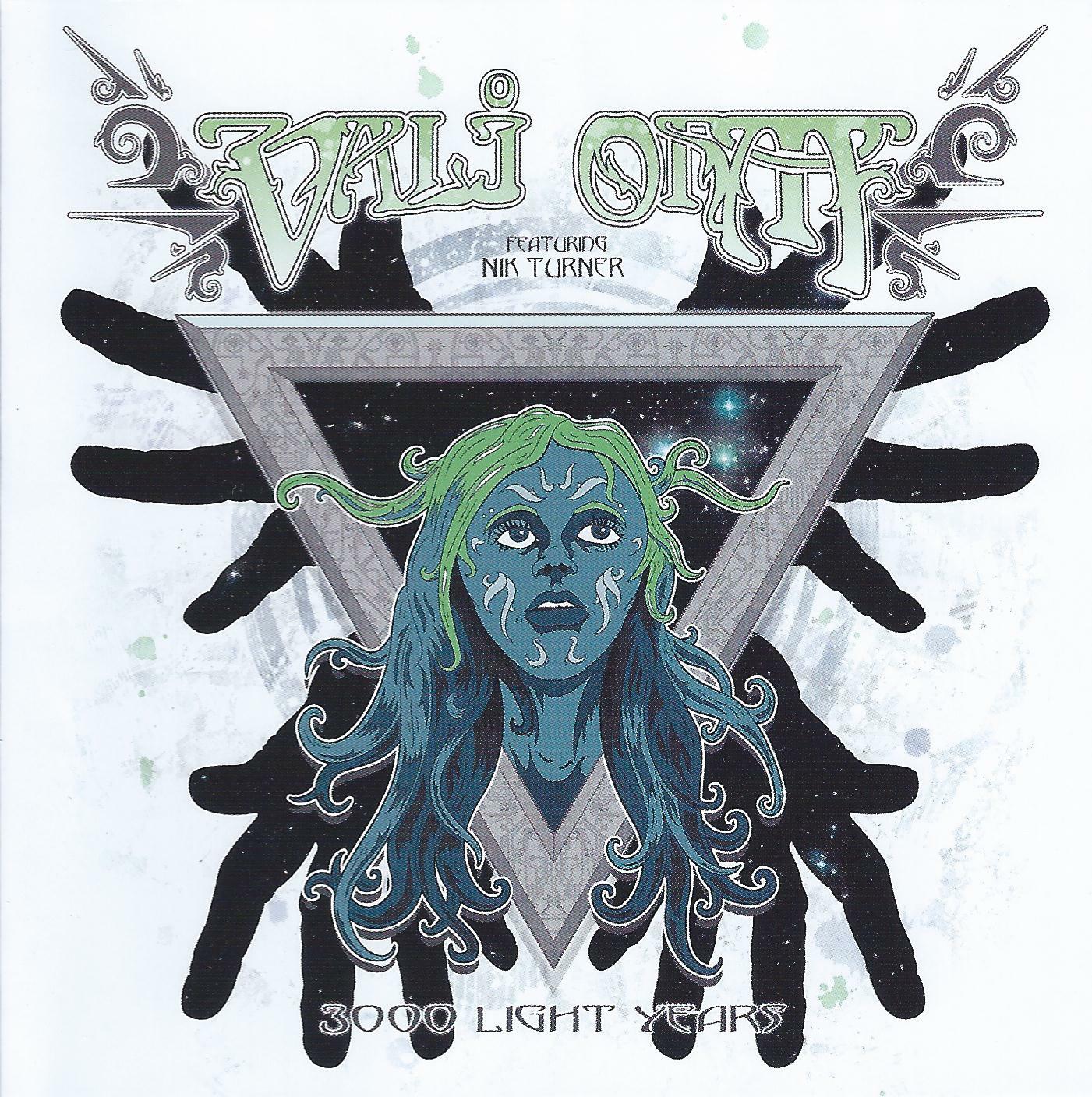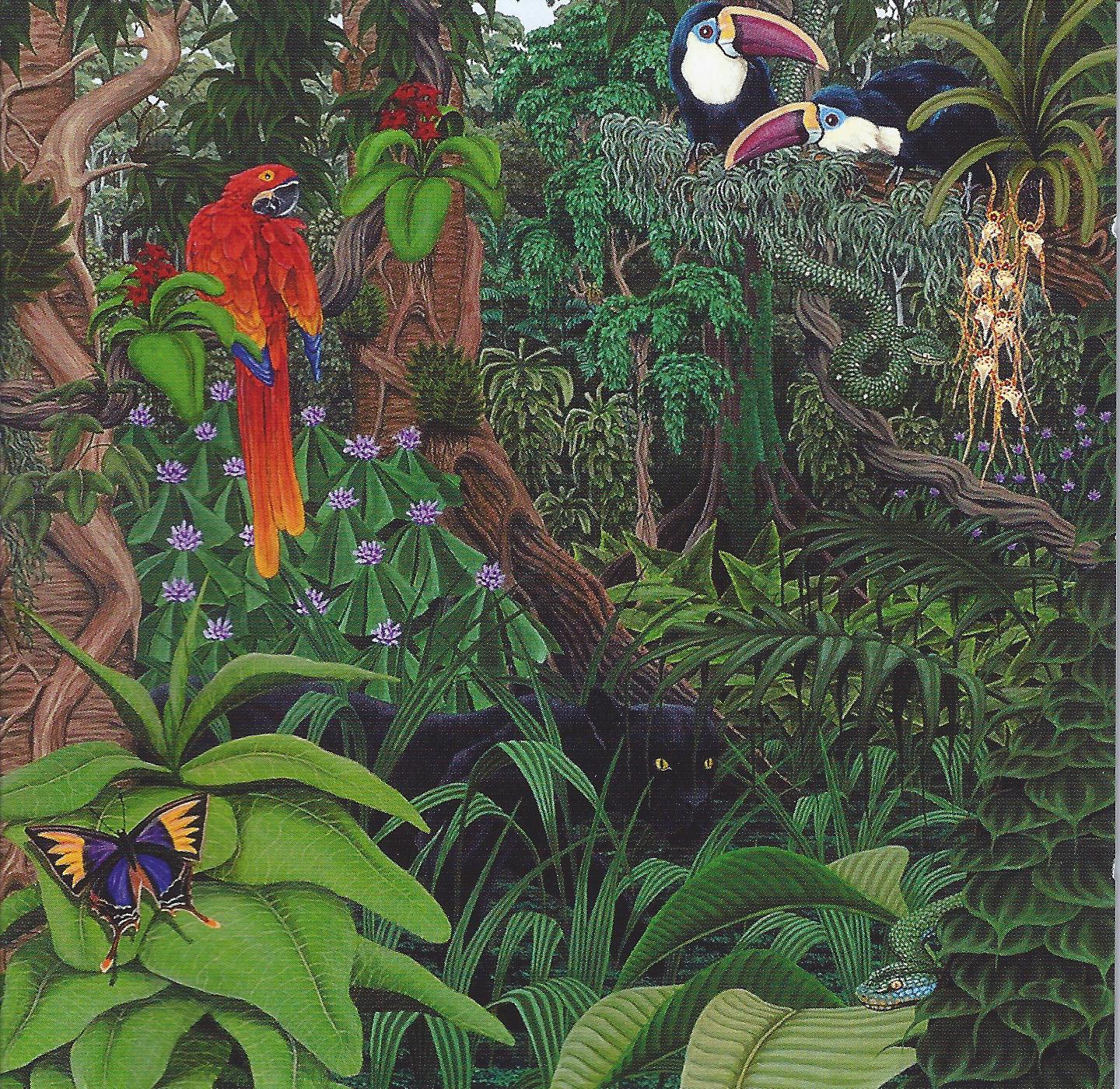 Released in 2010 but recorded in the years prior to 2007’s All Things Are Light, Horns Of Ammon is a 7 track, 36 minute set that highlights the somewhat lighter side of LP4. Now when I say “lighter”, I should emphasize that I’m writing about this CD immediately after having been immersed in the decidedly NOT-light new Bag Of Hammers (see review above), so this is pure brain massage compared to that album.
Released in 2010 but recorded in the years prior to 2007’s All Things Are Light, Horns Of Ammon is a 7 track, 36 minute set that highlights the somewhat lighter side of LP4. Now when I say “lighter”, I should emphasize that I’m writing about this CD immediately after having been immersed in the decidedly NOT-light new Bag Of Hammers (see review above), so this is pure brain massage compared to that album.
The set opens with the folky rocking Lost It All. I like the combination of acoustic and electric guitars, including a tasteful acidic lead, and the organ is a nice touch too. Nowhere demonstrates how LP4 can do a cool grooving song, yet still inject it with plenty of acid rocking heaviness. Fans of the Bevis Frond’s acid-minstrel tunes will dig this one. The aptly-titled Monster is similar, but with an acid-damaged garage rocking vibe. Porno In the Sink is a fun rocking party tune, except I’ll spare you what I could guess the song is about. Concubine is part acid-folk song and part fun grooving rocker similar to Porno In The Sink, and includes tasty wah-bending guitar solos. I’ve Been Down is the most laid back song of the set, consisting of a dreamy, sorta country-psych flavor, and we’re treated to still more tasteful melodic psych guitar solos. Finally, the nearly 11 minute HAWG!!! serves up a fun discourse on stoned psychedelic Blues.
I’ve been following LP4 for years and one of the things that keeps them so interesting is the varied ground they cover. In fact, I think both Horns Of Ammon and the new Bag Of Hammers together might be a good introduction to what the band are about for newcomers.
For more information you can visit the The Linus Pauling Quartet web site at: http://www.worshipguitars.org/LP4/
Reviewed by Jerry Kranitz

 Vali Ohm is the work of super-Hawkfan Danny Jackson, who has written the bulk of 3000 Light Years, supplied most of the vocals and played most of the instruments. Amongst the guest musicians is one Nik Turner, who even gets his own “featuring …” name check on the cover, perhaps rather cheekily, as he only appears on one track. The opportunity to record with the legendary former Hawk must have been like a dream come true for Jackson, who goes on to list his other inspirations as Ozric Tentacles and Frank Zappa, as well as ’70’s rock titans Bowie, The Who, Led Zeppelin and Pink Floyd. The album artwork looks pretty good, and the names of the tracks – Space Machine, Interstellar City and the title track – tick all the right boxes, but unfortunately the music itself never really manages to deliver. Opener Jazz Up the Spacerock fails to ignite and Club Outer Stratosphere is unlikely to get many people on the floor with tinny sound and thin vocals exhorting everybody to move and get in the groove at the titular nightclub. Having said that, 3000 Light Years does have its bright moments, most significantly on the title track, which features the much-anticipated spoken word vocal of Nik, and sounds a little like the stuff he was doing on the Space Ritual Otherworld album, as well as some nice acoustic guitar playing in the introduction, and a competent guitar solo. Jackson’s guitar playing also gets a chance to shine on album closer Home, and to a lesser extent on Space Machine. Perhaps one of the biggest hurdles for Vali Ohm is the lack of any kind of driving rhythm – there is very little bass in evidence, and the drum machines sound tired and thin. Jackson’s main strength appears to be at the keyboard, and early 1970’s Hawkwind synthesizer swoops abound throughout the album, particularly on Interstellar City. The brief, ambient track The Encounter works better than most, and Life Force 1 opens in similar style, before breaking into a jammy section that conjures up images of Secret Saucer playing a cover of Tim Blake’s Lighthouse. As a homemade labour of love, 3000 Light Years is indeed light years ahead of anything I could manage to put together, but suffers from a lack of substance and perhaps collaboration. Were Danny Jackson to lend his guitar and keyboard skills to a live rhythm section and more powerful vocalist, he would likely come up with something to match his spacerock aspirations.
Vali Ohm is the work of super-Hawkfan Danny Jackson, who has written the bulk of 3000 Light Years, supplied most of the vocals and played most of the instruments. Amongst the guest musicians is one Nik Turner, who even gets his own “featuring …” name check on the cover, perhaps rather cheekily, as he only appears on one track. The opportunity to record with the legendary former Hawk must have been like a dream come true for Jackson, who goes on to list his other inspirations as Ozric Tentacles and Frank Zappa, as well as ’70’s rock titans Bowie, The Who, Led Zeppelin and Pink Floyd. The album artwork looks pretty good, and the names of the tracks – Space Machine, Interstellar City and the title track – tick all the right boxes, but unfortunately the music itself never really manages to deliver. Opener Jazz Up the Spacerock fails to ignite and Club Outer Stratosphere is unlikely to get many people on the floor with tinny sound and thin vocals exhorting everybody to move and get in the groove at the titular nightclub. Having said that, 3000 Light Years does have its bright moments, most significantly on the title track, which features the much-anticipated spoken word vocal of Nik, and sounds a little like the stuff he was doing on the Space Ritual Otherworld album, as well as some nice acoustic guitar playing in the introduction, and a competent guitar solo. Jackson’s guitar playing also gets a chance to shine on album closer Home, and to a lesser extent on Space Machine. Perhaps one of the biggest hurdles for Vali Ohm is the lack of any kind of driving rhythm – there is very little bass in evidence, and the drum machines sound tired and thin. Jackson’s main strength appears to be at the keyboard, and early 1970’s Hawkwind synthesizer swoops abound throughout the album, particularly on Interstellar City. The brief, ambient track The Encounter works better than most, and Life Force 1 opens in similar style, before breaking into a jammy section that conjures up images of Secret Saucer playing a cover of Tim Blake’s Lighthouse. As a homemade labour of love, 3000 Light Years is indeed light years ahead of anything I could manage to put together, but suffers from a lack of substance and perhaps collaboration. Were Danny Jackson to lend his guitar and keyboard skills to a live rhythm section and more powerful vocalist, he would likely come up with something to match his spacerock aspirations. In 2008, Argentinian progressive metal/fusion band Poseidotica delivered their second album, La Distancia (reviewed for Aural Innovations #40), which proved to be one of the most musically thrilling releases of that year. Epic album closer Las Magnitudes in particular featured passages of such beauty and power that would melt the heart of even the most jaded listener Now they are back with Cronicas Del Futuro, released on the tenth anniversary of the band’s formation in Buenos Aires. The big question is, can it live up to the awesome legacy of their previous album?
In 2008, Argentinian progressive metal/fusion band Poseidotica delivered their second album, La Distancia (reviewed for Aural Innovations #40), which proved to be one of the most musically thrilling releases of that year. Epic album closer Las Magnitudes in particular featured passages of such beauty and power that would melt the heart of even the most jaded listener Now they are back with Cronicas Del Futuro, released on the tenth anniversary of the band’s formation in Buenos Aires. The big question is, can it live up to the awesome legacy of their previous album? Fretboard Jungle is the new album by founding Guru Guru guitarist/vocalist Ax Genrich and his current band, which consists of Steff Bollack on drums and Mario Fadani on bass.
Fretboard Jungle is the new album by founding Guru Guru guitarist/vocalist Ax Genrich and his current band, which consists of Steff Bollack on drums and Mario Fadani on bass.